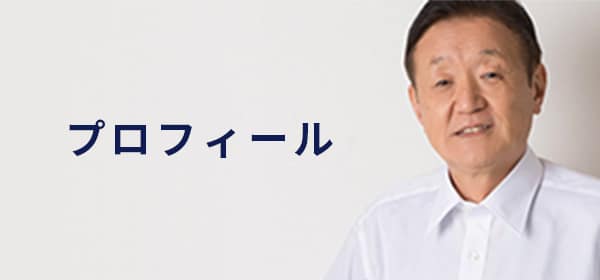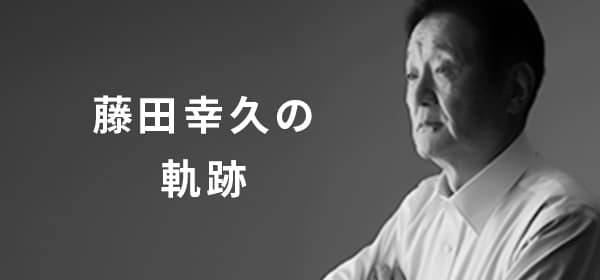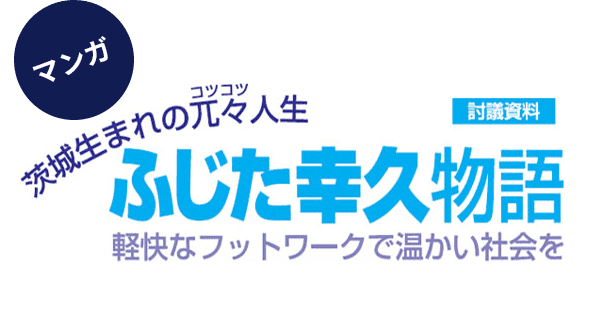ブログ
旧麻生鉱業の捕虜の記録が見つかる2008年12月21日
旧麻生鉱業の捕虜の記録が見つかる
2008年12月21日
18日の参議院外交防衛委員会で私が取り上げ、記者会見をしました戦時中の旧麻生鉱業の捕虜の記録が発見された事について、世界各国のマスコミが大きく取り上げています。
麻生首相の親族が経営していた旧「麻生鉱業」の吉隈炭坑(福岡県)に戦時中、300人の外国人捕虜がいたことを示す公文書を厚生労働省が保管していたことが18日、わかった。
民主党の藤田幸久参院議員に同省が文書を開示した。同社の炭坑で捕虜が働いていたことについて、首相は先月13日の参院外交防衛委員会で「事実関係は確認されていない」と述べていた。
公文書は陸軍省を引き継いだ第一復員省などが作成したとみられ、同炭坑の捕虜収容所に1945年5月10日から終戦の8月15日まで、オーストラリア人197人、英国人101人、オランダ人2人がおり、うちオーストラリア人2人が6月と7月に死亡したと記載されている。
同社の捕虜問題を巡っては2006年11月に米国紙が報道した際、外務省は当時の麻生外相の指示で在ニューヨーク総領事館のホームページに反論を掲載。しかし、今回の資料が見つかったことを受け、同省は最近、削除した。
戦時中、麻生首相の親族が経営していた旧麻生鉱業(福岡県)の炭坑に外国人捕虜が約300人いたことが18日、厚生労働省の保管する公文書でわかった。首相は同鉱業に捕虜がいたとの外国メディアの報道に対し、「事実関係は確認されていない」と反論してきたが、公文書が見つかったことで、改めて説明責任が問われることになる。
公文書は1945年8月15日付で、旧麻生鉱業吉隈炭坑の捕虜収容所にオーストラリア人197人、英国人101人、オランダ人2人がいたとし、同年7月にはオーストラリア人2人が死亡したとの記述もある。陸軍省を引き継いだ旧第一復員省などが作成し厚労省が保管していた。民主党の藤田幸久参院議員の照会に厚労省が回答した。
同鉱業の捕虜問題は、米紙ニューヨーク・タイムズが06年11月に取り上げ、外務省が在ニューヨーク日本総領事館のホームページ(HP)で反論していたが、状況が変わったとして17日に削除した。首相がかつて社長を務めた麻生セメントは同鉱業の流れをくむ。
藤田氏が別途入手した米国立公文書館保有の資料にも、同鉱業が外国人捕虜に採炭作業をさせていたとの記述があるという。藤田氏は「これまで政府が認めてこなかった。首相には説明責任がある」と語っている。
時事通信は18日、「麻生首相の親族が日本植民地時代に経営していた旧麻生鉱業が外国人捕虜300人を鉱夫として使用していたという日本政府の文書が確認された」と報じた。日本政府がこのような事実を認めたのは今回が初めてとなる。麻生首相は外相時代に「第2次世界大戦の当時、旧麻生鉱業に外国人捕虜がいた」という主張に対し、一貫して否認してきた。
厚生労働省はこの日、民主党の藤田幸久参議院議員の要請で公開した公文書は戦後、旧陸軍省の資料を引き継いだ政府機関で作成された。公文書には福岡県にある旧麻生鉱業吉隈炭坑の捕虜収容所「第26分所」で英国人(101人)、オランダ人(2人)、オーストラリア人(197人)が1945年5月から終戦の8月15日まで強制労働をさせられた事実が明示されている。
藤田議員は18日の記者会見で「麻生首相は捕虜の労働条件と死亡の因果関係について検証する責任がある」と主張した。
厚生労働省の社会・援護局側は「捕虜を労働力として使用することは当時の状況では一般的のこと」とし「虐待があったのであれば別問題だが、この資料ではこのような内容は確認されてない」と話している。
麻生首相の親族が経営していた麻生鉱業は日本植民地時代に1万人以上にのぼる韓国人を徴用したことが伝えられている。韓国政府は11月28日、「戦時、動員された韓国人犠牲者の遺骨の実態を調査するため、政府間協議会(韓日遺骨調査協議会)で旧麻生鉱業に関連する資料の提出を求めた。麻生首相は、旧麻生鉱業が後に名前を変えた麻生セメントの社長を務め、政界入りしている。

Bundles of documents stored in a basement and left to gather dust since the 1950s have forced Japan to acknowledge for the first time the use of slaves in wartime by Aso Mining ? the family business of the Prime Minister.
Health Ministry records that were released yesterday after a long struggle between opposition MPs and the civil service appear to confirm that the company used hundreds of British and Australian prisoners of war as slave labourers to dig coal in its mine
Worse still, said Yukihisa Fujita, the MP chiefly responsible for tracking down the papers, the stash of other records still in the Health Ministry may implicate dozens of other Japanese companies in similar schemes.
Japan has owned up previously to the use of Korean slave labour during the war but the documents forced the Government of Taro Aso to admit for the first time that European prisoners toiled in Japanese mines under similar conditions, Mr Fujita told The Times.
Hirofumi Nakasone, the Foreign Minister, said that he would consider a wider investigation into slave labour.
The discovery of the papers ? and their dramatic appearance in the hands of Mr Fujita at a parliamentary committee meeting yesterday afternoon ? could provide yet more political ammunition for the many opponents of Mr Aso, whose short tenure as Prime Minister has been marred by controversy and plunging public approval ratings.
Mr Aso, who has confronted popularity levels that have felled previous Japanese prime ministers, is now fighting not only for his own leadership survival but for the life of the Liberal Democratic Party, the political monolith that has governed Japan in a nearly unbroken 54-year run of power.
The corridors of parliament are thick with rumours of party rebellions, breakaway factions and of a fundamental realignment of Japanese politics: few believe that Mr Aso has the skills, strategy or support to navigate his party through the next few months intact.
While Mr Aso, a divisive nationalist, has scrambled ever closer to the pinnacle of Japanese power, he has played down or ignored awkward questions about the murky history of the company that his father, Takakichi, ran during the war.
Although the allegations of slave labour have been a constant thorn in the side of Mr Aso in recent years, a supposed lack of hard evidence has allowed him to limit the damage to his reputation.
Before taking over as leader in September, Mr Aso was challenged directly over the history of the family business. Once again he refused to confirm any details about the business, whose offshoot, Aso Cement, he ran in the 1970s. “I was only five years old when the war ended, and have no memory of that time,” he said.
The refusal to acknowledge that side of the Aso company history has become more controversial as more evidence has emerged to confirm the allegations.
Documents from the United States National Archive, submitted by the Aso Mining company to the Supreme Commander for the Allied Forces in 1946, include a letter from the head of the company's Yoshikuma Coal Mine in Fukuoka to General Gen Sugiyama, the Minister of War.
The letter, dated February 22, 1945, politely requests permission to use 300 prisoners in the mines to undertake 12-hour working days for a year.
The typed document, produced on company paper, asserts that the prisoners of war were suitably fed and clothed and treated decently. Survivors of the ordeal have given very different versions of 15-hour days of forced labour in primitive conditions, with remorseless and exhausting work, starvation and beatings.
Arthur Titherington, of the Japanese Labour Camp Survivors' Association, told The Times that he was aware of the use of prisoners of war in the coalmine. “I was also forced to work in a mine as part of Japan's slave labour programme, although not the coalmine linked to the present Japanese Prime Minister. I had to work in a copper mine in Taiwan and I'm sure we were all treated in the same way, which was very badly,” he said.
The report was not accepted by the Japanese Government as absolute proof of the allegations, leading to a quest by opposition MPs for any shred of material archived in Japan that might authenticate the documents discovered in Washington.
That quest ended in a storeroom yards below the political heart of Tokyo with the discovery of a 43-page record. It detailed how Allied prisoners of war were deployed throughout a network of camps used to service the mines.
Next to the entry for Camp No 26 ? the one believed to have provided men for the Aso mines ? is written: “Brit: 101, Dutc 2, Aust 197, Total 300”.
Senior government members at the parliamentary committee meeting were forced to admit that the US documents now “seemed authentic” when they were presented with the papers.
http://www.nytimes.com/2008/12/20/world/asia/20japan.html
http://www.google.com/hostednews/ap/article/ALeqM5hIPVlK6fOAMfQM80xEe2ztnEkvTQD955TBC81
http://www.telegraph.co.uk/news/worldnews/asia/japan/3836711/Japanese-PM-Taro-Asos-family-business-used-British-PoWs.html
http://www.watoday.com.au/world/japan-pm-in-wartime-prisoner-scandal-20081218-71r1.html
http://www.asiaone.com/News/Latest%2BNews/Asia/Story/A1Story20081218-108865.html
http://www.afpbb.com/article/politics/2551429/3624875
http://jp.ibtimes.com/article/biznews/081219/25562.html
http://www.jiji.com/jc/c?g=soc_30&k=2008121800696
http://www.nikkansports.com/general/news/f-gn-tp0-20081218-441612.html
http://search.japantimes.co.jp/print/nn20081219a1.html
日本の麻生総理の家族運営の鉱山で戦争捕虜の強制労働動員 是認
旧麻生鉱業に外国人捕虜300名勤務
- アーカイブ
-










